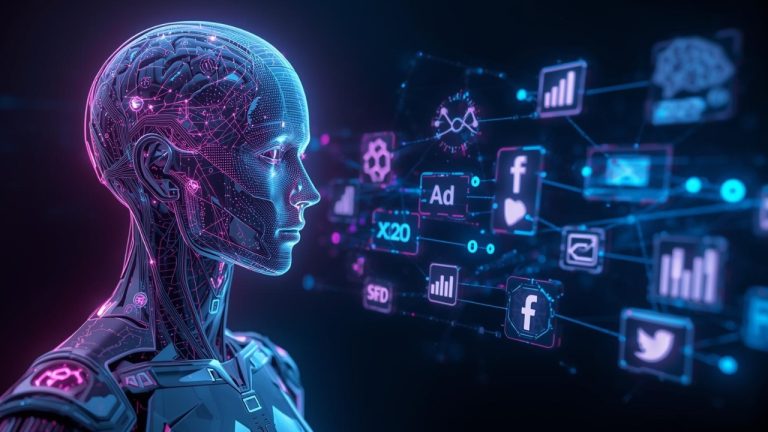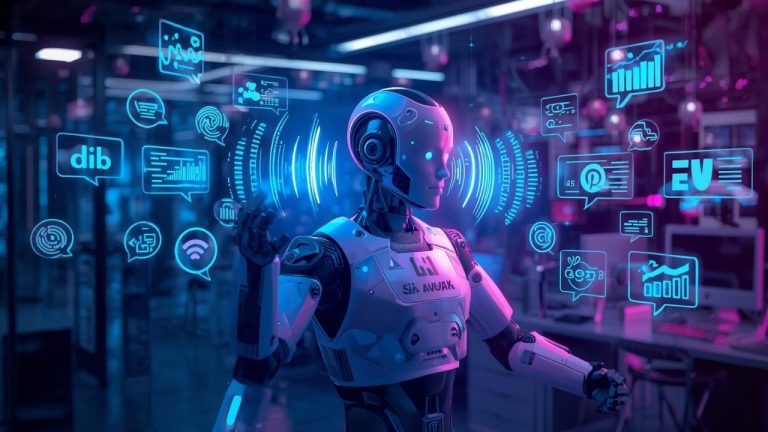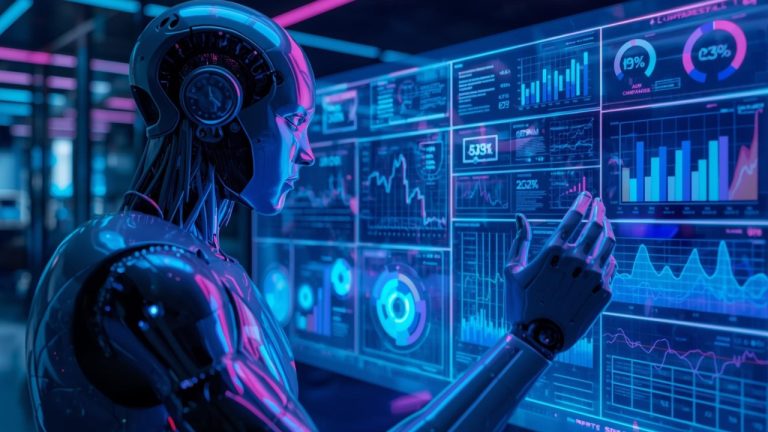
In the digital marketing world, A/B testing has long been a cornerstone of website optimization. By comparing two or more variations of a webpage, email, or advertisement, marketers can determine which version performs better in driving conversions, engagement, or other key performance indicators (KPIs). While traditional A/B testing has proven effective, it comes with limitations: it’s often time-consuming, manual, and reactive, and it may require large sample sizes to produce statistically significant results.
Enter Artificial Intelligence (AI). AI is revolutionizing A/B testing by making experiments smarter, faster, and more predictive. AI-powered optimization techniques enable marketers to understand user behavior more deeply, personalize experiences in real time, and continuously improve digital performance. This article explores how AI is transforming A/B testing, the technologies behind it, practical applications, and strategies to implement smarter optimization techniques.
- Understanding A/B Testing
A/B testing, also known as split testing, is a method of comparing two variations of a digital asset to determine which one produces better results. Common examples include:
- Two versions of a landing page with different headlines
- Variations of a CTA button color, size, or placement
- Multiple email subject lines to improve open rates
- Ad creatives with different messaging or visuals
Traditional A/B testing involves defining a hypothesis, splitting the audience randomly, collecting data, and analyzing results. While this method is effective, it has limitations:
- It can be slow, especially for websites with low traffic.
- It typically tests one or a few elements at a time.
- It doesn’t always account for complex user behavior or contextual factors.
- Results may not be predictive; they reflect only what has worked historically.
AI addresses these limitations by introducing automation, personalization, and predictive modeling into the testing process.
- How AI Enhances A/B Testing
AI-powered A/B testing builds on traditional methods while adding intelligence and efficiency. Here’s how AI enhances the testing process:
- Smarter Experimentation
AI can analyze historical data and user behavior to generate hypotheses for testing automatically. Instead of manually guessing which elements to test, AI identifies the most impactful variations.
- Multivariate Testing at Scale
Traditional A/B testing often struggles with multiple variables due to combinatorial complexity. AI can simultaneously test multiple elements (headlines, images, CTAs, layouts) and identify the optimal combination for each user segment.
- Real-Time Personalization
AI enables real-time personalization by dynamically adjusting content based on visitor behavior, demographics, and preferences. For example, different headlines can be served to first-time vs. returning visitors, increasing engagement and conversions.
- Predictive Optimization
AI algorithms use predictive analytics to forecast which variations are likely to perform best even before statistical significance is achieved. This allows marketers to implement winning strategies faster.
- Continuous Learning
AI continuously learns from new data, adapting testing strategies to evolving user behavior. This ensures that optimization is never static and continuously improving.
- Key AI Technologies in A/B Testing
Several AI technologies underpin smarter optimization techniques:
- Machine Learning (ML)
ML algorithms analyze user interactions, historical performance, and contextual data to predict outcomes, identify trends, and recommend test variations.
- Natural Language Processing (NLP)
NLP helps optimize copy by analyzing language, sentiment, and tone to determine which phrasing resonates best with different audiences.
- Predictive Analytics
Predictive models forecast user actions, allowing AI to prioritize high-impact variations and implement them proactively.
- Behavioral Analytics
AI examines detailed behavioral data, such as click patterns, scroll depth, and time on page, to understand why users respond to certain elements and inform future optimizations.
- Reinforcement Learning
Reinforcement learning enables AI to continuously experiment with variations, rewarding elements that perform well and discarding underperforming ones in real time.
- Benefits of AI-Powered A/B Testing
Integrating AI into A/B testing offers several advantages:
- Faster Results
AI can reach conclusions faster by analyzing data in real time and predicting the most effective variations, reducing the time required to achieve statistically significant results.
- Increased Conversion Rates
By dynamically personalizing experiences and testing multiple variables simultaneously, AI improves the likelihood of presenting the right content to the right user at the right time.
- Enhanced User Experience
AI identifies friction points, predicts user intent, and optimizes interactions, ensuring visitors receive a seamless and engaging experience.
- Cost and Resource Efficiency
Automated AI testing reduces the need for manual setup, monitoring, and analysis, freeing teams to focus on strategy and creative improvements.
- Scalability
AI-powered optimization can handle high-traffic websites, multiple campaigns, and global audiences simultaneously, something traditional A/B testing struggles with.
- Practical Applications of AI in A/B Testing
AI-powered A/B testing can be applied across various digital marketing channels:
- Landing Pages
AI can test multiple headlines, images, CTAs, and form layouts, predicting which combination drives the highest conversion rates.
- Email Marketing
AI can automatically test subject lines, body copy, and send times to maximize open rates, click-through rates, and conversions.
- Ad Campaigns
AI can evaluate ad creatives across demographics and platforms, identifying which messaging or visuals resonate best with specific audience segments.
- E-Commerce
AI can test product recommendations, discount placements, and checkout flows to reduce cart abandonment and increase sales.
- Content Personalization
AI can optimize content delivery based on user preferences, ensuring that each visitor sees the most relevant messaging, images, or offers.
- Steps to Implement AI-Powered A/B Testing
To leverage AI for smarter optimization, follow these steps:
Step 1: Define Goals and KPIs
Determine what you want to achieve, such as increasing conversions, reducing bounce rate, or boosting engagement. Clear goals guide AI algorithms in testing the right elements.
Step 2: Gather and Prepare Data
Collect historical performance data, visitor behavior metrics, and contextual information. Ensure the data is clean, accurate, and comprehensive to allow AI to make effective predictions.
Step 3: Select an AI Testing Platform
Choose a platform that integrates AI, machine learning, and analytics, and supports dynamic personalization and multivariate testing.
Step 4: Identify Test Variables
Determine which elements to test, such as headlines, CTAs, images, or page layouts. AI can also suggest variables based on historical data and predictive analysis.
Step 5: Implement Dynamic Testing
Deploy AI-driven variations that adjust in real time based on visitor behavior, preferences, and engagement.
Step 6: Monitor Results and Iterate
Track KPIs, conversion rates, and engagement metrics. Use AI insights to refine future tests and optimize continuously.
- Best Practices for AI-Powered Optimization
To maximize the effectiveness of AI in A/B testing, follow these best practices:
- Start Small
Begin with high-priority pages or campaigns to validate AI insights before scaling to larger segments.
- Focus on High-Impact Elements
AI works best when optimizing elements that directly influence user decisions, such as CTAs, headlines, and product recommendations.
- Ensure Data Privacy
Comply with privacy regulations such as GDPR and CCPA when collecting user data for AI-driven testing.
- Combine AI Insights with Human Judgment
While AI is powerful, human oversight ensures creative, strategic, and brand-aligned decisions.
- Continuously Learn and Adapt
AI algorithms improve over time, but they require ongoing monitoring, training, and updates to stay effective.
- Common Mistakes to Avoid
Even with AI, optimization efforts can go wrong if these mistakes occur:
- Ignoring user context: AI predictions must consider device, location, and intent
- Overcomplicating tests: Too many variables can confuse AI models and dilute results
- Neglecting qualitative insights: AI analyzes behavior quantitatively but combining it with qualitative feedback adds depth
- Failing to segment users: Treating all visitors as homogeneous can reduce personalization effectiveness
Avoiding these mistakes ensures AI-driven A/B testing delivers actionable, high-impact results.
- The Future of AI in A/B Testing
The future of A/B testing is intelligent, automated, and continuously learning:
- Predictive Personalization: AI will serve personalized variations even before testing begins based on predicted user intent.
- Cross-Channel Optimization: AI will integrate A/B testing across websites, emails, ads, and apps for a unified strategy.
- Reinforcement Learning: AI will continuously experiment with variations, adjusting in real time to maximize engagement and conversion.
- Voice and Visual AI Integration: Future testing may include optimizing voice interactions, video content, and visual elements.
Businesses that adopt AI-driven A/B testing now will gain a competitive advantage by delivering more relevant, engaging, and conversion-focused experiences.
- Conclusion
Traditional A/B testing has been a vital tool for digital marketers, but it is often limited by manual processes, slow iteration, and lack of personalization. AI transforms A/B testing into a smarter, faster, and more predictive process, enabling marketers to:
- Personalize experiences in real time
- Test multiple variables simultaneously
- Predict which variations are most likely to convert
- Continuously optimize content, layout, and messaging
- Gain actionable insights from complex behavioral data
AI-powered A/B testing ensures that every visitor interaction is meaningful, engaging, and conversion-focused. By integrating AI into their optimization strategies, businesses can maximize ROI, improve user experience, and stay ahead of the competition in a rapidly evolving digital landscape.
The future of optimization is clear: intelligent, automated, and data-driven A/B testing powered by AI. Embracing these techniques today will ensure that digital campaigns remain relevant, impactful, and highly effective for years to come.







